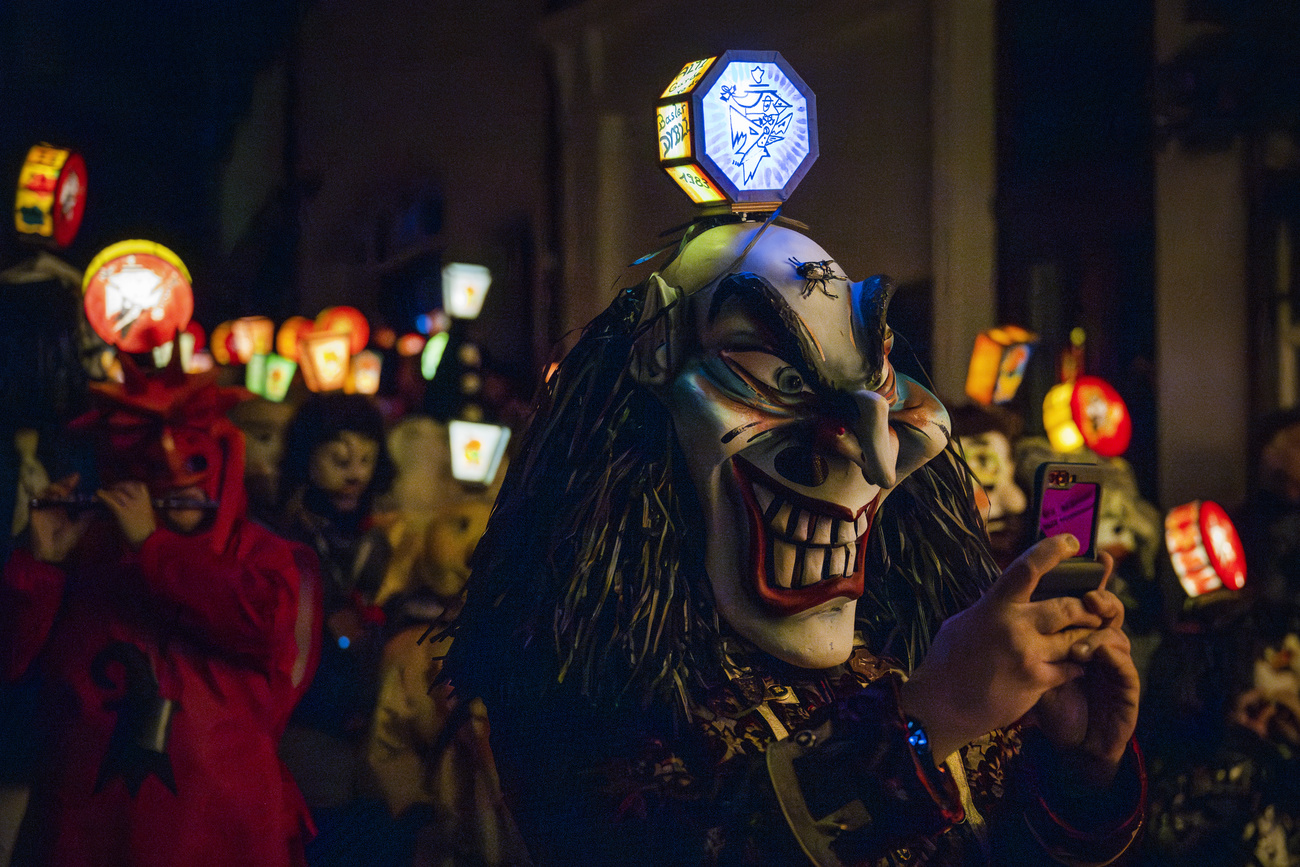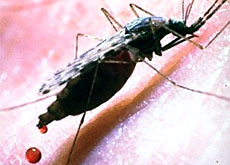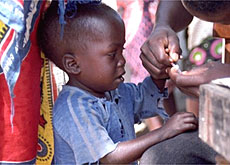DDT: From miracle chemical to banned pollutant

In the late 1930s, Paul Müller, a research chemist at the firm of Geigy in Basel was searching for an insecticide to kill clothes moths.
One of his experiments involved a compound known as dichloro- diphenyltrichloroethane, originally made by a German chemist in 1874.
Müller coated the inside of a glass box with this white, odourless powder and filled it with houseflies. At first nothing happened but by the next morning, all the flies were dead.
A fresh batch of flies and other insects suffered the same fate. Even when he scrubbed the box with a solvent, the flies kept dying, killed by tiny traces of the powder.
The discovery of the properties of this compound, whose name was eventually shortened to DDT, earned Müller the Nobel Prize for medicine in 1948.
“DDT has properties that other insecticides didn’t have,” says Swiss historian, Lukas Straumann.
“It was very cheap. It could be mass-produced. It wasn’t very poisonous for humans and warm-blooded animals, and it killed a lot of insects in a very short time.”
DDT goes to war
During the Second World War, DDT was widely used to protect Allied troops and civilians from malaria, typhus and other insect-borne diseases.
One of its first triumphs in 1944 was controlling a major outbreak of typhus in Naples.
Meanwhile, in Germany it was used as an agricultural insecticide to boost food production.
“Geigy sold DDT both to the Germans and the Allies,” says Straumann, who examined the role of Swiss chemical firms for an international panel probing Switzerland’s wartime past.
“In the first year alone, the German authorities ordered 10,000 tons of DDT, which was a huge amount for a new product.”
Miracle chemical
The subsequent successes of DDT in the fight against malaria were spectacular.
In India in 1945, malaria infected an estimated 75 million people and killed 800,000. By the early sixties, the number of cases had dropped to about 50,000.
In what is now Sri Lanka, malaria cases went from 2.8 million in 1948 before the introduction of DDT down to fewer than 30 in 1964.
Greece saw the number of cases drop from one to two million a year to virtually zero.
In 1946, there were 75,000 malaria cases on Sardinia. In 1951 after the campaign finished, there were nine.
DDT helped eradicate malaria from both Europe and North America.
Pariah pollutant
By the late 1940s and early 1950s some scientists noted that certain species such as the common housefly were developing immunity to the pesticide.
Moreover, DDT’s indiscriminate use in agriculture during the 1950s and 1960s and subsequent accumulation in the food chain began to cause concern.
“Because of its low acute toxicity to humans, it was used in a completely different manner to other insecticides,” says Straumann.
“And its persistency, which is precisely what Müller was looking for, became one of the key problems.”
In the United States, Rachel Carson’s Silent Spring, published in 1962, highlighted the environmental problems and notably its impact on birds of prey. The US banned DDT in 1972 and many other countries followed suit.
“The Swiss authorities were reluctant to act but when Canadian and US authorities started to restrict importation of Swiss cheese because of DDT residues, they had to react so they banned DDT within a few months,” says Straumann.
Although DDT accumulates in human and animal body fat, there is still no reliable evidence of the harmful effects of the compound on humans.
Phased out
In 2001, more than 120 countries signed up to a global treaty – the Stockholm Convention – banning the use of 12 chemicals known as Persistent Organic Pollutants.
The treaty made provision for about 25 countries to continue using DDT to combat malaria in accordance with WHO guidelines until they could develop cost-effective alternatives.
“DDT still has its place in malaria control,” says Marcel Tanner, director of the Swiss Tropical Institute. “First of all you have areas of the world where the anopheles vector is not yet resistant to DDT.
“Secondly you only need tiny quantities in house spraying to keep the mosquito population down, which reduces the transmission of malaria.
“If you consider the extreme burden of malaria and the lack of good tools to control it, when we have a tool like DDT which is still effective, then it would be entirely wrong to ban it.”
When DDT spraying stops, the number of malaria cases frequently explodes as happened in South Africa and several South American countries in the 1990s.
“If there had been a total ban, it would have had an extremely negative impact on countries which have relied on DDT as a source of malaria control,” agrees Robert Ridley of the World Health Organisation’s tropical disease research programme.
Lifesaver
In the late 1930s, Geigy was a dyestuff producing company which was focusing its research on pharmaceuticals.
DDT enabled the company to enter the completely new market of agro-chemicals and gave it a ten to 15 year advantage over competitors.
It proved to be the most important agricultural pesticide before the herbicide market took off in the 1950s.
As for Paul Müller, he died in 1965 – three years after the publication of Silent Spring.
“Paul Müller was rather shy and a real gentleman,” says biologist, Willy Büttiker, who worked at Geigy in the 1940s and carried out some of the first field trials on DDT in Switzerland.
“He never complained that his compound which was a world saver was no longer in public favour.”
swissinfo, Vincent Landon
DDT was first synthesized in 1874 by German chemist, Othmar Zeidler.
In 1939, Switzerland’s Paul Müller discovered its effectiveness as an insecticide.
It was widely used in the Second World War by both the Allies and Germany.
Müller won the Nobel Prize for medicine in 1948.
DDT played key role in malaria eradication programme of World Health Organization.
In the 1960s, long-term residual effects caused environmental alarm.
Prohibited in the US and many other countries since the 1970s.
Global treaty in 2001 bans 12 persistent pollutants.
WHO achieves exemption for DDT to combat malaria.

In compliance with the JTI standards
More: SWI swissinfo.ch certified by the Journalism Trust Initiative









You can find an overview of ongoing debates with our journalists here . Please join us!
If you want to start a conversation about a topic raised in this article or want to report factual errors, email us at english@swissinfo.ch.